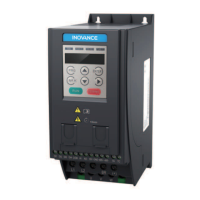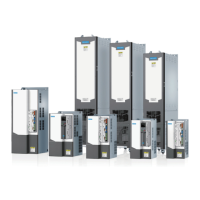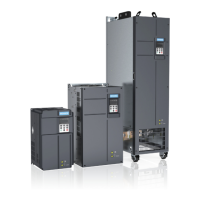Electrical Installation
‑179‑
Table 8–19 Grounding description for parallel connection
No.
Wiring Description
①
Connect the main circuit input PE terminal to the grounding copper
busbar of the control cabinet through the protective grounding
conductor.
②
Connect the PE cable on the input power supply end to the grounding
copper busbar of the control cabinet.
③
Connect the grounding copper busbar of the control cabinet to the
metal enclosure of the control cabinet through the protective
grounding conductor.
④
Connect the motor output cable shield to the output PE terminal of
the drive.
8.5.4 Cabinet System Grounding
The most cost‑effective measure to suppress interference in the cabinet is to ensure
that the interference source is isolated from the equipment that may be disturbed
during installation. Divide the control cabinet into several EMC areas or use several
cabinets based on the intensity of the disturbance source, and install devices into
corresponding areas based on the requirements listed in the following table.
Table 8–20 Wiring requirements
No.
Wiring Requirement
1
Place the control device and the drive device in two separate
cabinets.
2
Use grounding cables with a cross‑sectional area of at least 16
mm
2
to connect different cabinets, therefore realizing
equipotential between the cabinets.
3
In a cabinet, install devices into different areas according to
signal intensity.
4
Devices in different areas of the cabinet should be
equipotentially connected.
5
All communication cables (such as RS‑485 cables) and signal
cables from the cabinet should be shielded.
6
Place the power supply input filter close to the input interface of
the cabinet.
7
Spray all grounding points in the cabinet for protection.

